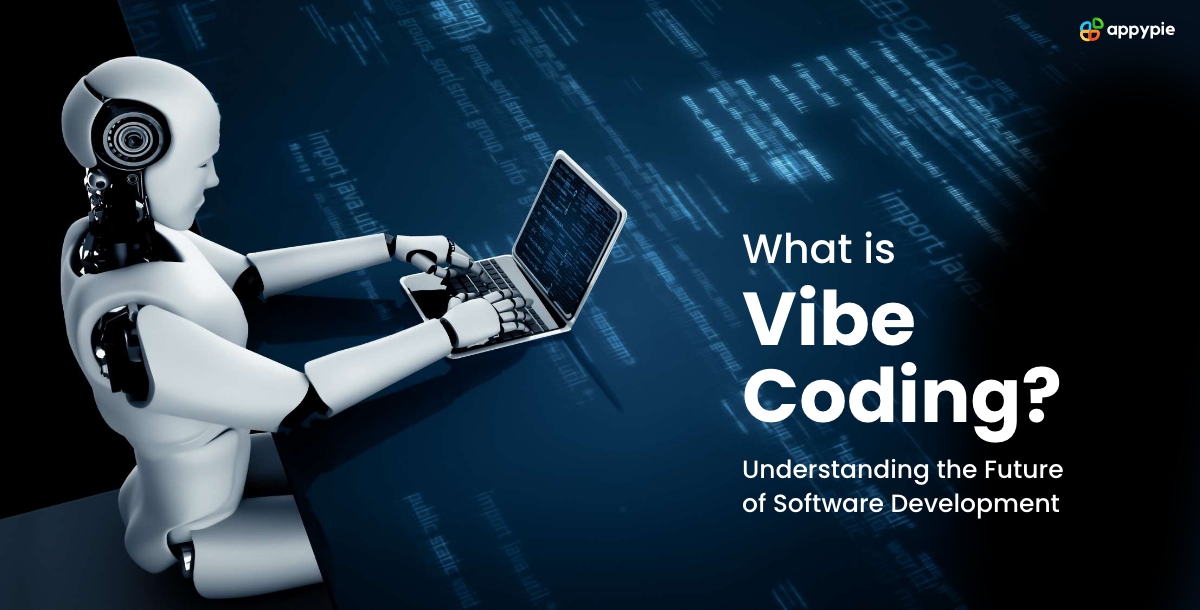What is Vibe Coding? The Future of Software Development

Vibe coding represents a fresh approach to software development that moves beyond traditional scripting and rigid frameworks. At its core, vibe coding focuses on intuitive interaction between developers and code, emphasizing flow, context, and adaptive responsiveness. This method enables faster iteration and deeper alignment with the intended user experience.
Unlike conventional coding practices that rely heavily on static logic and predefined structures, vibe coding introduces a dynamic, almost human-centric rhythm to building software. Whereas, Vibe Coding based AI Code Generator encourages developers to tune into the evolving state of their projects and respond fluidly.
In this article, we will explore how to implement vibe coding in practical terms, examine real-world applications, understand its limitations, and discuss the broader shift it represents in the development landscape. We will also look at the emerging field of VibeOps and its role in operationalizing this new coding style.
What is Vibe Coding?
Vibe coding is a development approach centered on fluid interaction between developers and their code. It moves away from fixed, step-by-step programming to embrace a dynamic process where code evolves naturally in response to context and ongoing feedback. The goal is to create software that adapts quickly and intuitively to changes, improving both speed and quality in development cycles. Unlike traditional methods, vibe coding treats coding as a continuous, responsive flow rather than a static sequence of instructions.
Suggested Read: Best AI Coding Assistant Tools for Beginners in 2025
How to Implement Vibe Coding?
To start vibe coding, you don’t need to learn a new programming language. What you need is a shift in how you approach building software.
First, focus on flow over strict structure. Instead of planning every detail upfront, begin with a working idea and let the code evolve as you test and learn. Use tools that provide instant results like live previews and real-time collaboration to maintain momentum.
Second, stay aware of context. Vibe coding works best when you understand the bigger picture, the user needs, system behavior, and environment. Write flexible code that adapts as conditions change.
Third, keep communication open. Vibe coding thrives on team interaction. Building software together with shared understanding helps maintain a steady rhythm.
Finally, let data guide your decisions. Use real-time feedback from users or system monitoring to continuously improve your code. The more your code responds to real conditions, the better it performs.
Vibe coding is not about rushing or being careless. It is about staying in tune with your project and letting your work develop naturally.
Suggested Read: 10 Best Vibe Coding Tools in 2025
Real-World Examples of Vibe Coding
Vibe coding is already making a difference in several fields. Platforms like Appy Pie Vibe demonstrate how this approach brings flexibility and speed to different types of projects by focusing on interaction and adaptation during the development process.
Web Development
Many web development teams use tools like hot-reloading and live previews that show code changes immediately on the browser. This allows developers to test new features or fix bugs on the fly without stopping their workflow. It speeds up feedback cycles and helps maintain focus on user experience throughout the build process.
Game Development
In game design, developers apply vibe coding by continuously tuning gameplay mechanics during development. They rely on player input and testing to make quick adjustments rather than waiting for long update cycles. This method supports creating more immersive and responsive game environments, improving player satisfaction in real time.
Startup Mobile Apps
Startups often release minimal viable products (MVPs) early to gather real user feedback. Using vibe coding principles, they iterate rapidly by pushing frequent updates based on live data. This flexible approach helps them respond to market demands quickly, pivot when necessary, and reduce wasted development time.
Data Science and AI
In data science, vibe coding manifests as continuous model retraining and adjustment as new data flows in. Instead of building static models that require manual updates, teams automate feedback loops so the system adapts dynamically to changing patterns. This leads to more accurate predictions and better handling of real-world variability.
Suggested Read: Best AI Code Generators in 2025
Limitations of Vibe Coding
1. Requires a Significant Mindset Shift
Vibe coding asks developers to move away from traditional, linear workflows and adopt a more fluid, adaptable style. This change in thinking can be challenging, especially for teams or organizations accustomed to detailed upfront planning and strict milestones. Without buy-in at all levels, vibe coding may struggle to take hold.
2. Not Suitable for Highly Regulated or Safety-Critical Projects
In industries like healthcare, finance, or aerospace, where compliance and safety are paramount, the flexible and iterative nature of vibe coding may conflict with strict documentation, testing, and approval requirements. These projects often demand fixed processes and traceability that vibe coding does not easily accommodate.
3. Potential for Unstructured or Messy Code
Because vibe coding encourages rapid iteration and adaptive changes, there is a risk that codebases become inconsistent or difficult to maintain. Without strong discipline, version control, and code reviews, teams may accumulate technical debt or create hidden bugs that slow future development.
4. Limited Tooling Ecosystem
While some modern IDEs and frameworks support live updates and instant feedback, the overall ecosystem tailored specifically for vibe coding remains underdeveloped. This gap can create friction for teams trying to implement vibe coding fully, requiring custom setups or workarounds.
5. Dependence on Close Collaboration
Vibe coding thrives on continuous communication and shared awareness among team members. This can be a challenge for remote or distributed teams working across time zones. Without effective communication channels and collaboration tools, the rhythm of vibe coding may break down, reducing its benefits.
Suggested Read: 10 Best AI Code Generation APIs in 2025
Paradigm Shift: How Vibe Coding is Changing Software Development
Vibe coding changes the way software is built by replacing the traditional step-by-step process with a continuous, evolving flow. Instead of writing all the code first and testing later, developers adjust and improve the software as they go. This approach helps teams respond quickly to new ideas or issues.
Another big change is how developers work together. AI code generation encourages close collaboration, where team members share progress and feedback in real time. This creates a shared rhythm that keeps everyone aligned and moving forward smoothly.
Vibe coding also shifts the focus from isolated pieces of code to the whole system. Developers write code that fits into a living, changing environment, making the software more flexible and better suited to what users need.
It accepts that not everything can be planned in advance. Instead of trying to remove all uncertainty, vibe coding embraces it. This lets teams experiment and learn while they build, improving the product step by step.
Finally, vibe coding blends development and operations into a single, connected process. This integration, known as VibeOps, speeds up delivery and makes maintaining software easier.
Suggested Read: What is Codex?
Evolution of VibeOps: The Operational Side of Vibe Coding
VibeOps is the natural extension of vibe coding into how software is run and maintained. It brings together development and operations teams, breaking down old barriers to create a more unified process.
Instead of waiting until coding is finished to handle deployment and monitoring, VibeOps encourages ongoing collaboration. This means operations are involved early and continuously, helping catch issues sooner and improve performance faster.
Tools used in VibeOps focus on real-time feedback and automation. They allow teams to track how software behaves in the real world and adjust quickly based on what they see. This creates a loop where development and operations feed into each other seamlessly.
As vibe coding evolves, VibeOps will become more important in managing complex systems. It helps teams stay agile and responsive while keeping software reliable and efficient.
Overall, VibeOps is about making the entire software lifecycle smooth, connected, and adaptive.
Suggested Read: Apple Partners with Anthropic to Integrate AI Vibe-Coding Assistant into Xcode
Conclusion
Vibe coding changes how software is built by focusing on flow, adaptability, and teamwork. While it has its challenges, it helps teams deliver faster and create software that better fits user needs.
VibeOps connects development and operations to keep the entire process smooth and responsive. Together, they point to a future where software evolves naturally with real-time feedback.
Adopting vibe coding takes effort but offers clear benefits for teams ready to work differently and stay agile.
